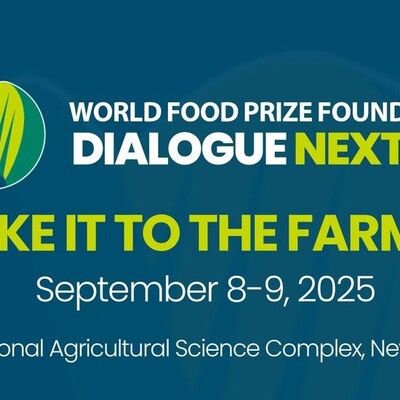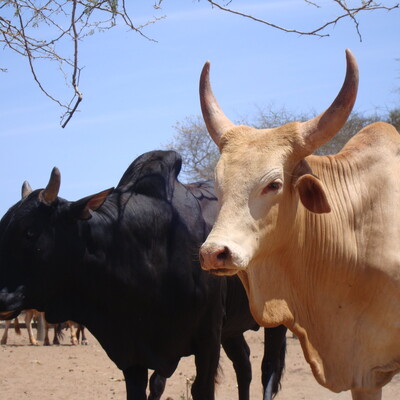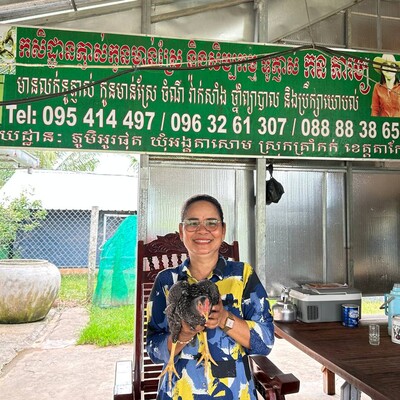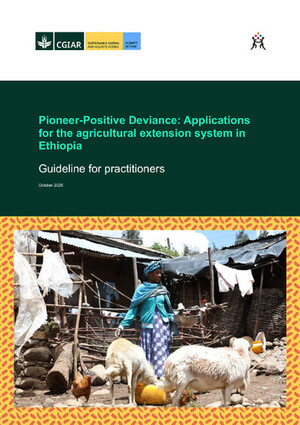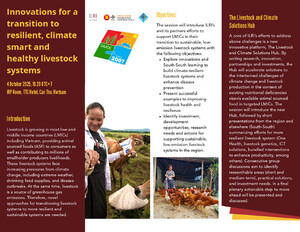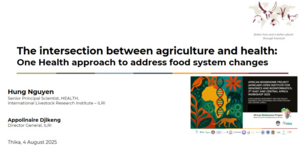
The many gifts of livestock—A view from Kenya

Andrew Tuimur, chief administrative secretary at the Kenya Ministry of Agriculture, Livestock, Fisheries and Irrigation and a member of the ILRI Board of Trustees (photo credit: ILRI).
The following remarks, published last week by Devex during the fourth meeting of the United Nations Environment Assembly (UNEA4), were made by Andrew Tuimur, chief administrative secretary at the Kenya Ministry of Agriculture, Livestock, Fisheries and Irrigation and a member of the International Livestock Research Institute (ILRI) Board of Trustees.
‘Delegates from around the world are in Nairobi, Kenya, this week for the annual United Nations Environment Assembly. This year’s theme, “innovative solutions”, acknowledges the need for fresh thinking to produce sustainable, healthy food choices in a time of escalating climate change, biodiversity losses and global population growth.
I commend the organizers of the conference for their ambition to enhance the world’s economic, food and environmental security simultaneously.
For many people, these are uneasy bedfellows.
Environmentalists, for example, worry about the impacts of agriculture on wildlife and other natural resources, while conservationists may not fully understand the needs of local communities to use lands for livestock grazing and crop farming.
It will come as a surprise to many UNEA delegates to hear one of my solutions for reducing poverty, hunger, and wildlife losses, here in Kenya.
It involves investing in sustainable livestock systems.
This solution will not come as a surprise to Kenyans, over 80 per cent of whom depend on agriculture.
In our smallholder farm and herding households, livestock are typically the family’s most valuable asset. The animals are not only an irreplaceable source of protein and other vital nutrients but also the main source of income and insurance against disaster. In households with no access to formal banking, animals are “four-legged savings accounts” that families draw on to pay for essentials such as food, school fees and medical bills.
Livestock are critical not just for poor households but for the broader economic health of all of Kenya.
Producing, processing and selling milk, meat and eggs contributes over 40 per cent of the economic output from our entire agricultural sector.
‘In our more fertile lands, farm animals make crop farming possible by enriching soils with manure and pulling plows for cultivation. And in the 80 per cent of our lands too dry for crop farming, herds of cattle, goats, sheep and camels share the savannahs with wildlife, and, like the wildlife, move to track grass and water resources as they change with the seasons.
The opportunities livestock present here are enormous.
With a vibrant livestock sector, we can build the wealth and nutrition and health of Kenyans.
With livestock, we can achieve 100 per cent food security, create jobs for our youth and empower women in rural and urban areas alike.
‘But what about environmental harm? Is it possible to produce more food in more efficient and more environmentally friendly ways? Yes, it is possible. Take this example in Kenya.
‘Since the 1930s experts had made dire warnings that a fast-rising farm population in the drylands of Machakos County, south of Nairobi, would strip the land bare. Instead, as the population tripled over the years, agricultural yields and values have risen while soil erosion dropped dramatically.
Key to this so-called ‘Machakos miracle’—the sustained intensification of agriculture and concomitant restoration of lands—say the experts, has been the close integration of livestock raising with crop growing.
‘Today, livestock offer even greater opportunities. . . . Extending such practices to millions of households will decrease Kenya’s greenhouse gas emissions—already extremely low compared to wealthy countries—while boosting household incomes, estimated by as much as $1000–$2000 a year. Improved production can also boost the nutrition of households, particularly of infants and children, for whom a single cup of milk or egg a day can help prevent the tragedy of stunted growth—and ensure the next generation of Kenyans has an opportunity to live a good and long life. Finally, as the UNEA delegates will be grappling with issues of climate change, let me remind readers that climate-smart livestock are among the best bets for farmers needing options for adapting to climate change.
In summary, the livestock systems of developing and emerging economies generate many gifts. . . .
My hope is that the delegates to the UNEA take the opportunity while in Kenya to consider how a new era of sustainable livestock production can play a major role in supplying the ‘innovative solutions’ they have come here to find.
Read the whole opinion piece by Andrew Tuimur at Devex: Opinion: Innovative solutions to sustainable development? Try livestock, 15 Mar 2019.
Read ILRI news of a recent similar opinion piece expressed by another ILRI board member, Gebregziabher Gebreyohannes, Ethiopia State Minister for Livestock and Fishery: A world where livestock are part of the solution—Ethiopia state minister, ILRI News blog, 8 Feb 2019.
Read the whole opinion piece by Gebregziabher Gebreyohannes at Thomson Reuters Foundation News: Healthy sustainable diets for all: A view from Ethiopia, 7 Feb 2019.
Read a recent World Economic Forum-ILRI white paper: Meat: The Future Series—Options for the Livestock Sector in Developing and Emerging Economies to 2030 and Beyond, Jan 2019
For more information, visit the Why Livestock Matter microsite.







